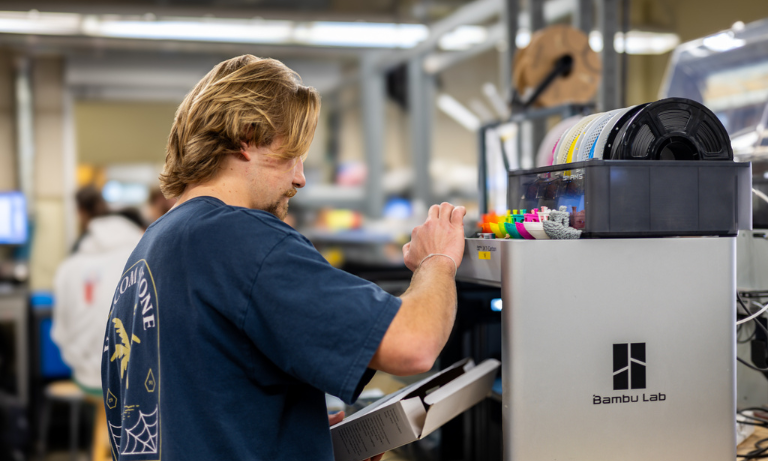While Zoë Wood is an innovative, tech-savvy computer science professor, she grew up in the countryside, raised in a one-room, 15×18-foot house in the Santa Barbara mountains.
“I spent most of my childhood outdoors,” she said.
Time outdoors and active play provided her with spatial reasoning skills – the capacity to think about objects in three dimensions. And that would eventually help her become an award-winning educator, who specializes in computer graphics.
“Computer science is like a great big puzzle, and I love puzzles,” she said.
This week Wood was honored with a 2018 Faculty Innovation and Leadership Award by the California State University chancellor’s office. The faculty-led selection committee reviewed more than 360 nominations from all 23 CSU campuses. The honor recognizes those educators who redesign courses, apply innovative teaching practices and more effectively use data to address equity gaps.
“Dr. Wood is a passionate and deeply engaging educator, an outstanding researcher, an empowering mentor and role model for students, and an amazing and inspiring colleague,” said Ignatios Vakalis, a professor in the computer science department who nominated Wood.
While Wood is credited with inspiring others to pursue computer science, she herself started her first undergraduate degree at UC Santa Cruz in very different fields.
“I did not think of myself as someone who might be interested in engineering or science, and I graduated from UCSC in 1992 with a double major in American Studies and Women’s Studies,” she said.
With the dotcom industry booming, she took a class while working at her alma mater and was hooked.
“I figured out how to work 75 percent of the time and pay for a second undergraduate degree, this time earning a B.S. in computer science from UCSC with highest honors in 1997.”

Zoë Wood has taken students on several trips to Malta, searching for sunken treasures.
After earning her doctorate from Caltech, she joined Cal Poly’s computer science department in 2003. While Wood’s technical aptitude led her to pursue computer science – and her publications have been cited over 1,100 times — she has also encouraged her artistic side.
“To solve a problem, you need to be able to look at it from different angles,” she said.
With this in mind, she co-created an interdisciplinary minor between computer science and art, Computing for the Interactive Arts, with Cal Poly faculty Enrica Costello in Art. The minor, in its third year, boasts over 60 percent female students.
Nationwide, the number of females pursuing computer science degrees has dropped considerably since the 1980s – something Wood is working to address.
“When I started at Cal Poly, there were approximately 9 percent female students in the computer science major,” she said. “At this point, there is close to 24 percent — this is in large part because we have been actively addressing the problem.”
Wood advises the Women Involved in Software and Hardware (WISH) and has taken hundreds of students to the impactful Grace Hopper Celebration conferences. She has also encouraged young people to pursue the field, creating computer science curriculum for students across grade levels. And she has introduced students to job prospects at places like Industrial Light and Magic, Disney, Apple and Microsoft. At one time, she said, eight of her students were working at DreamWorks.
She also comes up with interesting uses for computer science. Last year, she and a team of students generated headlines when they found a lost World War II plane that had sunk off the coast of Malta, an island country near Italy. With the help of an autonomous underwater vehicle, she and her students created 3-D maps of the British plane.
“I think most students enjoy seeing the impact of their work and are keen to have their efforts applied to a real world problem,” she said. “I am a curious person, so I love working on real world problems, too.”
Katie Davis, a former student, who wrote a letter recommending Wood for the award, said Wood is a favorite among students and also a solid educator.
“Dr. Wood uses data to inform her decisions and back up her intuitions,” wrote Davis, now a software engineer with Facebook. “She keeps up to date on the latest research about teaching and learning methodologies and applies this knowledge to her classrooms.”
While Wood was raised an artistic person in a mostly rural setting, she embraces the union of technology, math and art and works to empower more students to be creative and explore these fields.


